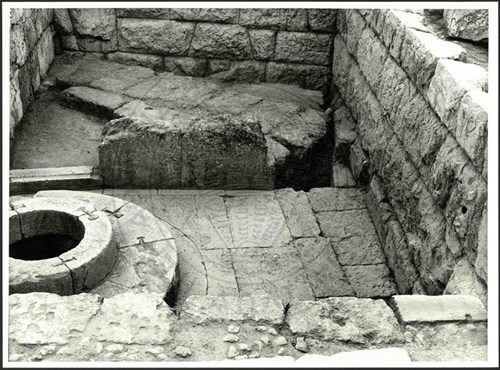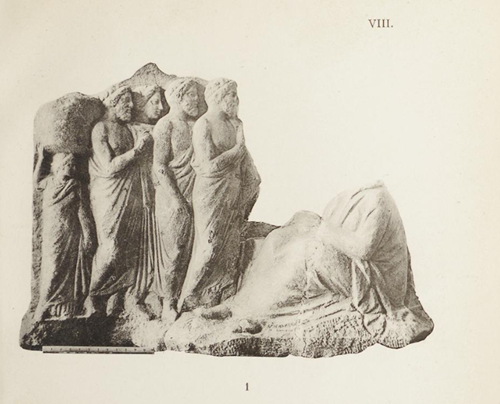The mirthless rock (agelastos petra)
The quest of Demeter for her daughter lasted for days. It was exhausting and pointless. Nobody seemed to know what had happened to Persephone. Finally, after nine days of a fruitless search, the goddess came to Eleusis and sat down to rest. But there seems to be some confusion as to the spot she chose. According to the Homeric Hymn, the authoritative source of information regarding the origins of the Eleusinian Mysteries, Demeter sat in the shade of an olive tree by the Kallichoron well. The young women of Eleusis found her there and brought her to the palace of Keleos. Other sources, though, preserve different details of the story. Apollodorus describes how Demeter came to Eleusis and sat on a rock near the so-called Kallichoron well. The poets Callimachus, Nicander of Colophon, and Ovid also mention this landmark, with the latter calling it “cold”.

The rock became known as “mirthless” in memory of Demeter’s deep sorrow. It was a prominent landmark in Eleusis but its location remains elusive because ancient literary sources were vague on this topic. Only Pausanias sheds some light on the location by his refusal to talk about the stone. He was very conscientious about betraying the secrets of Demeter’s cult. It was the goddess herself, after all, who had explicitly told the people not to reveal the content of her Mysteries to those who had not been initiated. During his visit to Eleusis, therefore, Pausanias refused to describe the monuments within the sacred precinct. The clear implication from his failure to mention the agelastos is that the rock was located somewhere past the Greater Propylaea.

As the initiates ascended the processional way and left the Lesser Propylaea behind them, they would have come across a jutting stone by the stepped platform hewn into the rock surface. The decision not to smooth the surface of the road may be attributed to the fact that the outcropping was the “agelastos” rock, a sacred landmark. The platform served the needs of the spectators, who could stand there and watch a priestess reenact the arrival of Demeter and her period of mourning on the stone.
Bibliography
Kerényi, Carl. Eleusis: Archetypal Image of Mother and Daughter, Princeton: Princeton University Press, 2020.
Mylonas, George. Eleusis and the Eleusinian Mysteries, London: Routledge, 1962.
Mylonopoulos, Joannis (ed.). Divine Images and Human Imaginations in Ancient Greece and Rome, Leiden: Brill, 2015.
Ogden, Daniel (ed.). A Companion to Greek Religion, Chichester: John Wiley & Sons, 2010.
Papangeli, Kalliopi.Eleusis: the archaeological site and the museum, Athens: Omilos Latsi, 2002.
Image sources: Kallichoron Well: Archaeological Society of Athens
Mirthless rock: Mitteilungen des Deutschen Archäologischen Instituts, Athenische Abteilung (1899)


